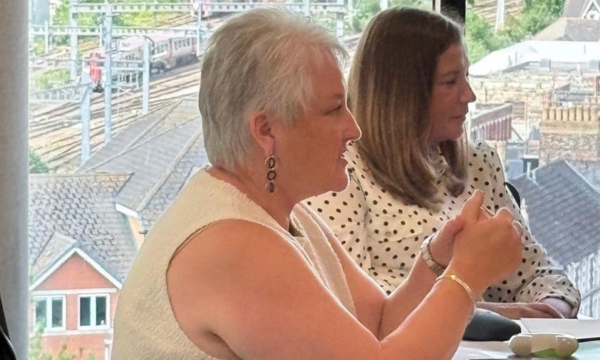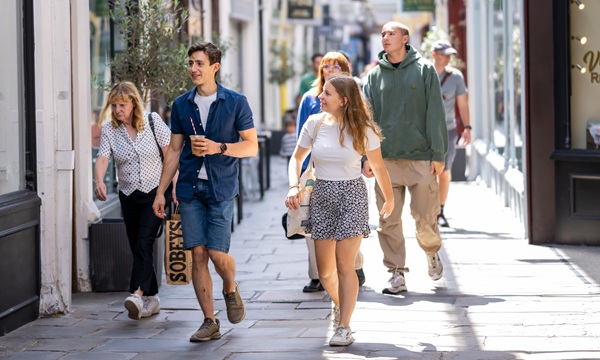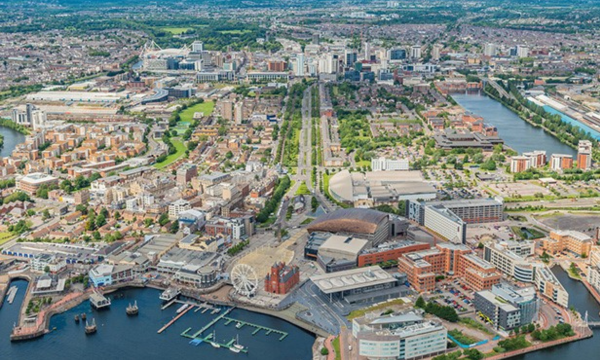
GUEST COLUMN:
Claire Haven-Tang
Professor of Destination Development,
Cardiff School of Management at Cardiff Metropolitan University
As Cardiff gears up for one of its busiest summers yet, with Oasis kicking off their reunion tour at the Principality Stadium and dozens more major live music events planned across the city, the economic benefits are clear.
An estimated £100 million of fan spending linked to just two Oasis concerts is certainly not to be underestimated. But as someone working closely with place-based development and cultural events, I think it’s important to see these headline numbers as just one part of an exciting bigger picture.
Large-scale music events have undoubted appeal. They capture headlines, draw in crowds, and place Cardiff firmly on the touring map for world-class acts. These moments are important not just for the spend they bring, but for how they position Cardiff as a city capable of hosting major cultural milestones. The fact that Oasis is launching its reunion tour here says something about the city’s growing reputation, as did last year’s Taylor Swift and Pink concerts. Those were events that brought international visitors and sparked a real sense of buzz and civic pride.
But the challenge – and also the opportunity – lies in how we capitalise on that momentum. The biggest shows can often feel like parachute events – high-impact but fleeting. Much of the associated spending, such as on tickets or merchandise, may not remain in the local economy.
So while the short-term boost is welcome, the long-term gains come from thinking about how these events connect to Cardiff more broadly – and how we ensure they help build a more vibrant, sustainable cultural ecosystem.
That’s where the role of more grassroots and homegrown music activity becomes vital. Events like the Cardiff Music City Festival, which launched last autumn, provide a different type of value. My colleague Dr Dewi Jaimangal-Jones at Cardiff Metropolitan University evaluated that first festival and found positive results, particularly from an economic standpoint. But the significance of events like this extends beyond what we can easily quantify.
The Cardiff Music City Festival, and the Music City strategy that underpins it, reflects a growing ambition to make Cardiff a recognised hub for music and culture. It brought together gigs, performances and installations across a wide range of venues – from grassroots spaces to more established locations. It also drew in artists from across genres and backgrounds, including homegrown talent like Mace the Great and
High Contrast, alongside international acts such as Lauryn Hill and Leftfield. These sorts of events don’t just attract visitors; they give local people reasons to re-engage with their city, support its venues and celebrate its creative output.
One of the challenges we saw with the first year of the festival was around awareness. While people attended individual gigs, they weren’t always aware that these were part of a wider programme. So there’s still work to do in building that profile, encouraging more residents and businesses to get behind it, and showing that music is not just something that happens to Cardiff, but something that is shaped by and for the people who live here.
Smaller-scale events also offer a different kind of accessibility. They tend to be more affordable and inclusive, helping to ensure that music is not just a visitor product, but a civic asset. When events are spread across different parts of the city and across different times of the year, they bring a more even spread of engagement and footfall – something that’s particularly important for local retailers and hospitality businesses.
Of course, major concerts have their place. They are part of what gives Cardiff its edge. But they are not the whole story. And they can bring with them challenges too – from road closures to disruption, and in some cases, displacement activity where people actively avoid the city centre unless attending the event. A more balanced approach means recognising the value of both the big moments and the steady, year-round rhythm of local music activity.
This summer, with more than 30 headline gigs scheduled across venues including the Principality Stadium, Cardiff Castle and Blackweir Fields, the city has a unique opportunity. Events like the new Blackweir Live series, which is already attracting audiences from beyond the city, show how music can activate quieter periods and bring people into the city centre at times when footfall would otherwise dip. It also highlights how Cardiff’s music scene is evolving – not just in terms of scale, but in terms of variety, reach and ambition.
The challenge for all of us – academics, event organisers, policymakers and residents alike – is to celebrate the big names while also championing the grassroots. That’s how we make music matter – not just for a weekend, but for the long term.













